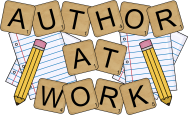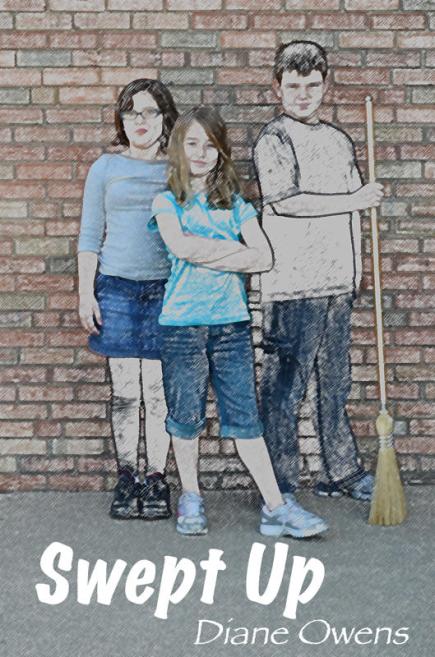Yesterday I wrote about where story ideas come from. You can read it here. I also promised a real-life example, so here it is.
A real-life example
 The idea for Swept Up first occurred to me when my daughter came home from a field trip to BizTown. BizTown is this big building used by our local Junior Achievement. They’ve decorated the inside to look like a real town. It has everything – stores, factories, a city hall, even a cafeteria. Students spend the whole day at BizTown, doing the types of jobs they might have when they grow up – like working at a bank or delivering mail. My daughter managed the Exercise Center and she had a fantastic time. I liked the idea of kids getting to run everything for an entire day. I thought it would make a great story.
The idea for Swept Up first occurred to me when my daughter came home from a field trip to BizTown. BizTown is this big building used by our local Junior Achievement. They’ve decorated the inside to look like a real town. It has everything – stores, factories, a city hall, even a cafeteria. Students spend the whole day at BizTown, doing the types of jobs they might have when they grow up – like working at a bank or delivering mail. My daughter managed the Exercise Center and she had a fantastic time. I liked the idea of kids getting to run everything for an entire day. I thought it would make a great story.
The problem was I was in the mood to write something a bit scary and extremely troubling to the characters. So I needed to turn this really fun field trip into an awful situation. To do that, I started asking myself “what if?”

It went something like this:
What if, for some reason, the teacher gets called away? What if, after awhile, the kids notice that not only is the door she went through locked, but all the doors are locked? What if it gets later and later and the teacher doesn’t come back? What if the kids call for help but no one comes? What if, after spending the whole night locked inside this fake town, some of the kids start acting like they belong there and no longer want to leave? And to make things even worse, what if there are strange, frightening noises outside and then the walls start coming down?
Well, I don’t know about you but that was enough to creep me out. Then came the hard part. Because for every “what if,” I needed a “why.” Why would the teacher leave? Why are the doors locked? Why doesn’t anyone come? Why are some of the kids acting like they belong there? Why are they hearing strange noises and why, oh why is the building falling apart?
That’s a lot of why’s. And it took me a long time to come up with answers that made sense.
 But you know what? Every answer brought me closer to what the story was actually about and what had to happen to make it all work. Once I knew that, all I had to do was write it down.
But you know what? Every answer brought me closer to what the story was actually about and what had to happen to make it all work. Once I knew that, all I had to do was write it down.
It’s actually a lot of fun. Just pay attention to your thoughts and feelings. Be on the look-out for story ideas and don’t expect these ideas to be too much of anything at first. Be willing to play with them a little. If you ask yourself enough “what ifs” and answer them all with reasonable “why’s”, your thoughts and feelings will not only lead to a story idea but a full-blown story.
 , and couldn’t wait for her to write more. Now that she has, I’m happy to share it here. Mikaela has done an excellent job of showing us her characters through their actions and dialogue. She’s revised Chapter One and made it even stronger. She’s continued the story with strong details, descriptions and dialogue. Her main character’s motivation to change is realistic and told well. This is a truly inspirational story. Well done, Mikaela!
, and couldn’t wait for her to write more. Now that she has, I’m happy to share it here. Mikaela has done an excellent job of showing us her characters through their actions and dialogue. She’s revised Chapter One and made it even stronger. She’s continued the story with strong details, descriptions and dialogue. Her main character’s motivation to change is realistic and told well. This is a truly inspirational story. Well done, Mikaela!












Written
on May 20, 2013